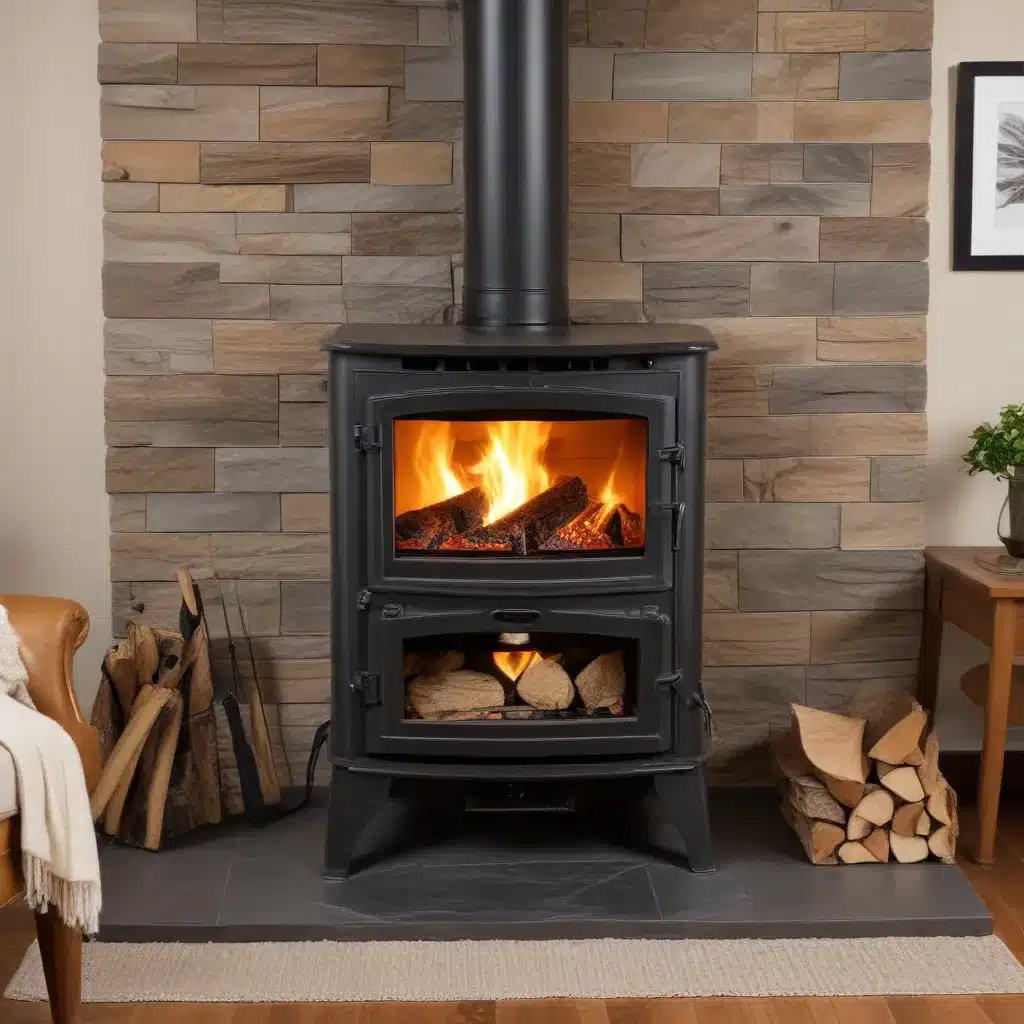
As a seasoned expert in wood stoves and heating solutions, I’m thrilled to share practical tips and in-depth insights on how to heat your home in an eco-friendly and sustainable manner. In this comprehensive guide, we’ll explore the benefits of certified wood stoves, maintenance best practices, and strategies to maximize energy efficiency and reduce your environmental impact.
The Advantages of Certified Wood Stoves
Investing in a certified wood stove can be a game-changer when it comes to sustainable home heating. These modern, high-efficiency units are engineered to burn wood cleanly and efficiently, minimizing air pollution and maximizing heat output.
One of the key advantages of certified wood stoves is their impressive energy efficiency. The HP42-Alpine Pellet Stove by Comfortbilt, for instance, boasts an industry-leading efficiency rating of up to 87%, ensuring you get the most heat out of every log or pellet. This not only reduces your fuel consumption but also lowers your carbon footprint and utility bills.
Furthermore, certified wood stoves are designed with advanced combustion technology that burns wood more cleanly, significantly reducing particulate matter and other harmful emissions. This makes them a far more eco-friendly heating solution compared to traditional fireplaces or older wood stoves, which can contribute to indoor and outdoor air pollution.
Choosing the Right Wood Stove for Your Home
When selecting a wood stove for your home, it’s crucial to consider factors such as the size of the space you need to heat, the type of fuel you prefer, and your overall heating needs. By carefully evaluating these variables, you can ensure that you choose a wood stove that not only meets your energy requirements but also aligns with your sustainable lifestyle.
One important consideration is the LEED (Leadership in Energy and Environmental Design) certification of your potential wood stove. LEED-certified homes are designed to be more energy-efficient, healthier, and environmentally friendly, with a focus on reducing energy and water consumption, improving indoor air quality, and using sustainable materials.
If you’re interested in pursuing LEED certification for your home, look for wood stoves that have been specifically designed and tested to meet LEED standards. These stoves will not only help you achieve your sustainability goals but also provide long-term cost savings and a healthier living environment.
Maintaining Your Wood Stove for Maximum Efficiency
Proper maintenance is key to ensuring that your wood stove continues to operate at peak efficiency and minimize its environmental impact. Regular cleaning, inspections, and minor adjustments can make a significant difference in the stove’s performance and lifespan.
One critical aspect of wood stove maintenance is ensuring that the chimney or flue is in good working condition. A properly functioning chimney not only enhances the stove’s efficiency but also helps to prevent the buildup of creosote, a flammable byproduct of wood combustion that can pose a fire hazard.
Additionally, it’s essential to use the appropriate fuel for your wood stove. Dry, seasoned hardwoods, such as oak or maple, burn cleaner and more efficiently than softwoods or wet, unseasoned wood. By following the manufacturer’s recommendations and using the right fuel, you can maximize your wood stove’s energy efficiency and minimize its environmental impact.
Strategies for Eco-Friendly Home Heating
Beyond investing in a certified wood stove, there are several strategies you can implement to further enhance the eco-friendliness of your home heating system. One such approach is to explore the possibility of a LEED-certified home, which can provide a range of benefits, including improved energy efficiency, better indoor air quality, and reduced water consumption.
As outlined in the LEED certification information, these high-performance homes are designed to be resilient, comfortable, and environmentally responsible. By incorporating LEED principles into your home, you can enjoy the advantages of a more sustainable living space while contributing to a healthier planet.
Another effective strategy is to explore the use of renewable energy sources, such as solar power or small-scale wind turbines, to supplement your wood stove’s heating capabilities. By generating on-site electricity, you can reduce your reliance on grid-supplied energy, further lowering your carbon footprint and utility costs.
Fireplace Inserts: A Sustainable Upgrade
If you’re considering upgrading an existing fireplace, a fireplace insert can be an excellent eco-friendly solution. As discussed in the Reddit post, inserts can help improve the efficiency and performance of a traditional fireplace, reducing heat loss and minimizing air pollution.
Fireplace inserts are designed to fit directly into the existing fireplace opening, providing a more controlled and efficient combustion process. These inserts often feature advanced air circulation systems and improved sealing, allowing them to capture and distribute heat more effectively than an open fireplace.
When selecting a fireplace insert, be sure to choose one that is certified for energy efficiency and environmental performance. This will ensure that your upgrade not only enhances the heating capabilities of your home but also aligns with your sustainable values.
Conclusion
By embracing certified wood stoves, implementing eco-friendly heating strategies, and maintaining your equipment properly, you can enjoy the warmth and ambiance of a wood-burning heating system while minimizing your environmental impact. Remember, small changes can have a significant collective impact, so start your journey towards more sustainable home heating today.
For more information and resources on wood stoves, fireplace maintenance, and energy-efficient heating solutions, be sure to visit WoodStoveHeaters.com. Our team of experts is dedicated to providing you with the knowledge and tools you need to create a comfortable, eco-friendly home.


